#fortepiano
Text
Frédéric Chopin (1810-49) - Nocturne for Piano in B-Major, Op. 32 No. 1. Performed by Kevin Kenner, 1848 Pleyel piano.
#frederic chopin#romanticism#classical music#piano#pianist#nocturne#period performance#period instruments#keyboard#pleyel piano#pianoforte#fortepiano#chamber music#chopin
102 notes
·
View notes
Text
Out of practice, but still the most badass trick up my sleeve…
110 notes
·
View notes
Text
Where the heck did you find a freaking Fortepiano Nai??!!

WHERE? HOW?
No guys, I'm not having a seizure, Fortepiano is a real instrument. It's actually the Pianoforte's ancestor. And it's called like that also because the keys have inverted colors.
#the perks of having a musician brother i guess#fortepiano#that is NOT a pianoforte#but close#nai#knives#million knives#trigun#trigun stampede#musician#geek musicians
60 notes
·
View notes
Text
Beethoven's Moonlight Sonata (or at least, the popular melancholic first movement) is a piece from 1801-1802 that 1) he never called the "Moonlight Sonata, 2) is now usually played at a different time signature than he intended, and 3) is played on the modern grand piano, which is a very different instrument acoustically than the fortepiano he wrote it for.
Yes, this is a bit of pedantic nerd crap. The contemporary recordings of this are basically fine. But if you ARE a pedantic nerd, then you're interested to hear this piece as Beethoven conceived of it, and as it would have sounded at the time, on the early thunky, twangy "fortepiano" Chad-harpsichord-in-a-box everyone would have been using since it was invented in Florence in 1698.
Interestingly enough, by 1802, what we think of as modern pianos were appearing in various iterations, the result of technological advances from the Industrial Revolution being applied to instrument manufacture. Around the time of Beethoven's death in 1827, Paris has become the world leader in producing pianos that are basically equivalent to what you probably think of when you hear that word.
The best way to describe the difference between the sounds is that the fortepiano is a lot more "intimate" - less resonate, sharper, and the noises from the mechanical actions aren't as muffled. Here is Eric Zivian playing it:
youtube
I feel this is a lot less dour and ominous than most modern versions end up. This becomes less an apocalyptic funeral dirge and more a quiet reflection on personal sadness. Which is probably what Beethoven was going for, since he dedicated it to yet another woman he pined for, who rejected him because Beethoven was even too much of a weird mess for the low bar of 1802.
...No we don't need to talk about why I feel a special connection to this.
#beethoven#classical music#piano#fortepiano#music history#moonlight sonata#music video#live performance#Youtube
11 notes
·
View notes
Text
youtube
Antonio Soler (1729-83) - Keyboard Sonata No. 12 in G Major ·
Patrick Cohen, fortepiano,
4 notes
·
View notes
Photo


(via How Cancer Has Influenced Andreas Steier’s Music-Making - The New York Times)
2 notes
·
View notes
Text
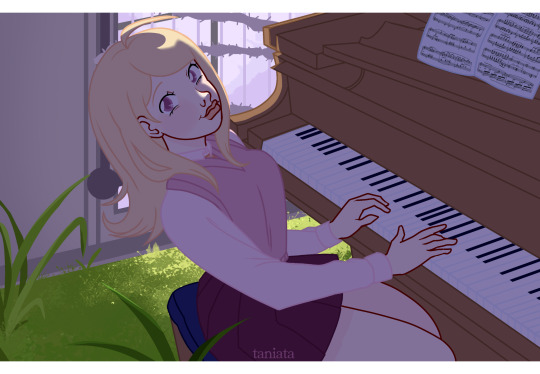
29 notes
·
View notes
Text
#k. 475#kristian bezuidenhout#every bezuidenhout rendition is a new standard#fortepiano#wolfgang amadeus mozart#fantasia#music
2 notes
·
View notes
Text

Собралась что-нибудь вам сыграть, дубль 3🙈🎹
4 notes
·
View notes
Text
「違う、コガクじゃない」
柴田俊幸&アンソニー・ロマニウク デュオ・リサイタル2024
5月2日(木) 三鷹市芸術文化センター 風のホール
ヨーロッパを中心に活動するフルート奏者 柴田俊幸と、古楽からコンテンポラリー、クラシックからジャズ、アンビエントまで多彩な活動を展開する鍵盤楽器奏者 アンソニー・ロマニウクによるデュオ。
コロナ禍中、2022年東京・春・音楽祭の最終公演で発表し話題騒然となったプログラムが、2年の時を経て東京にて最新版として再演される。バッハから、チック・コリア、フィリップ・グラス、ジョルジ・リゲティといった近現代の作品までを即興を交えて境目なく演奏。本当の多様性とは何か、音楽を通じて観客に問いかける。
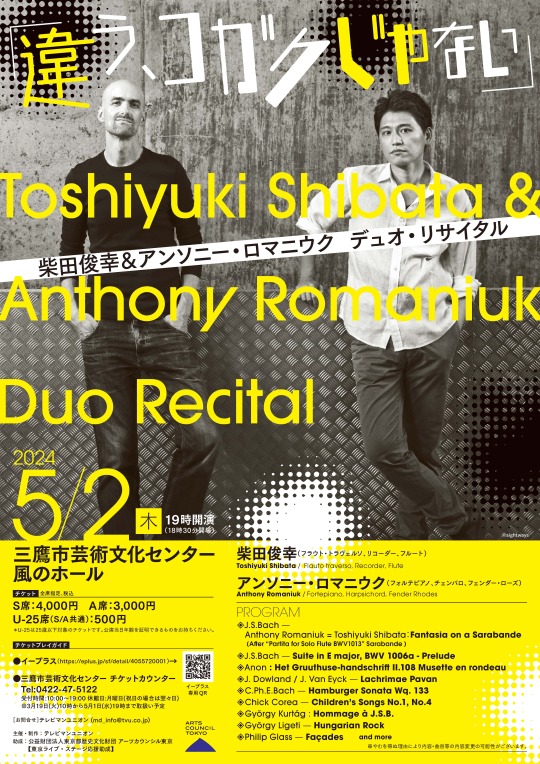
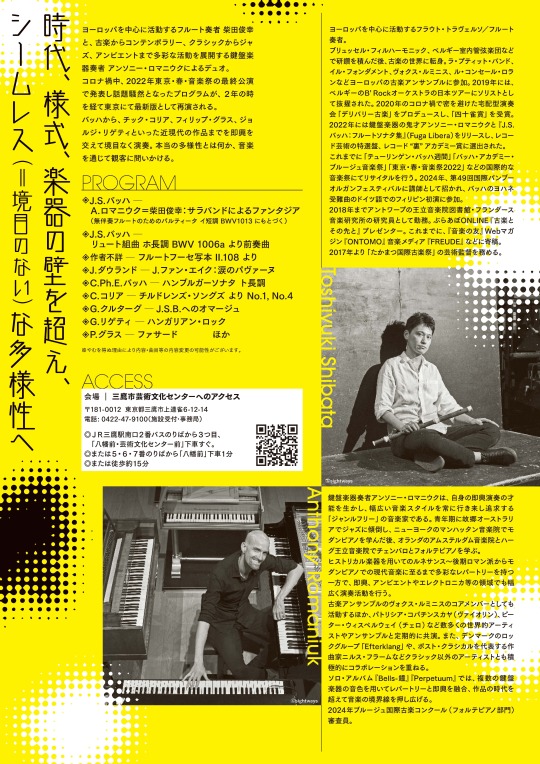
《公演詳細》
会場:三鷹市芸術文化センター 風のホール
日時:2024年5月2日(木)19:00開演(18:30開場)
出演:柴田俊幸
(フラウト・トラヴェルソ、リコーダー、フルート)
アンソニー・ロマニウク
(フォルテピアノ、チェンバロ、フェンダー・ローズ)
【プログラム】
J.S.バッハ:
A.ロマニウク=柴田俊幸:サラバンドによるファンタジア
(無伴奏フルートのためのパルティータ イ短調 BWV1013 にもとづく)
リュート組曲 ホ長調 BWV 1006a より前奏曲
作者不詳:フルートフーセ写本 II.108 より
J.ダウランド/J.ファン・エイク:涙のパヴァーヌ
C.Ph.E.バッハ:ハンブルガーソナタ ト長調
C.コリア:チルドレンズ・ソングズ より No.1, No.4
G.クルターグ:J.S.B.へのオマージュ
G.リゲティ:ハンガリアン・ロック
P.グラス:ファサード ほか、即興を随所に含むプログラム
【チケット(全席指定、税込)】
S席:4,000円、A席:3,000円
U-25席(S/A共通)特価:500円
*U-25席は25歳以下対象のチケットです。公演当日年齢を証明できるものをお持ちください。
【チケット購入】
◉イープラス[詳細]
◉三鷹市芸術文化センター チケットカウンター Tel:0422-47-5122
受付時間:10:00~19:00 休館日:月曜日(祝日の場合は翌々日)
※3月19日10時から5月1日 19時まで取扱い
◉テレビマンユニオン Tel:03-6418-8617 (土日祝)
主催・問合せ:テレビマンユニオン
Tel:03-6418-8617(10:00~18:00/土日祝休)
[email protected]
助成:公益財団法人東京都歴史文化財団 アーツカウンシル東京【東京ライブ・ステージ応援助成】
youtube
「P.グラス:ファサード」
2023年 テューリンゲンバッハ週間(ドイツ)公演の様子(オフィシャルYoutubeより)
youtube
「G.リゲティ:ハンガリアン・ロック」
#Flute#flauto traverso#Recorder#harpsichord#Fortepiano#electric piano#フルート#フラウト・トラヴェルソ#リコーダー#古楽#現代音楽#contemporary music#即興#impro#Youtube#classical#post classical
0 notes
Text
Wolfgang Amadeus Mozart (1756-91) - Fantasia for Piano in d-minor, KV 397. Performed by Jörg Demus, fortepiano.
#wolfgang amadeus mozart#classicism#classical music#piano#pianist#period performance#period instruments#fortepiano#pianoforte#fantasia#fantasy#chamber music#mozart#keyboard#piano music
94 notes
·
View notes
Text
Beethoven 🖤
I tuned the fortepiano about an hour before this was recorded and had already managed to throw a handful of notes out of tune just from practicing this… you can hear on the high F especially that the unison is wayyyy out 😅
Maybe one of these days I should pull a Liszt and intentionally loosen a string or two so that it snaps off and goes flying, just for extra drama… 🤔 (except that replacing a string is a bitch of a process and I don’t want to do that. but I could.)
51 notes
·
View notes
Text
Concert review, ★★★★★, Isabelle Faust, Anne Katharina Schreiber, Antoine Tamestit, Jean-Guihen Queyras, Alexander Melnikov @ Tonhalle am See, Zurich, 2023-11-03 — Works by Robert Schumann: String Quartet in A minor, op.41/1; Piano Quartet in E♭ major, op.47; Piano Quintet in E♭ major, op.44; Johannes Brahms: II. Andante, un poco adagio from the Piano Quintet in F minor, op.34 (encore)
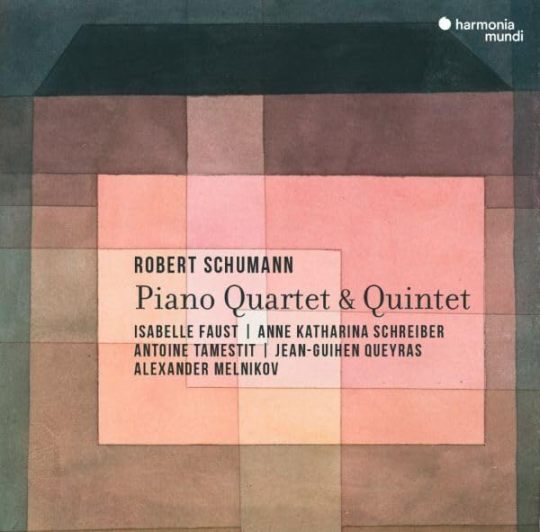
#rolfsmblog#concertreview#concert#brahms#schumann#stringquartet#pianoquartet#pianoquintet#fortepiano#chambermusic#isabellefaust#annekatharinaschreiber#antoinetamestit#tamestit#jeanguihenqueyras#queyras#alexandermelnikov#melnikov#pleyel#harmoniamundi#cdpreview#tonhallezurich#hochulikonzertag
0 notes
Text


J.S.Bach was fascinated by fortepiano. Here are his advertisements he placed to promote Pianofort made by Silbermann at the Collegium Musicum concert
These are rarely published archival documents abut Bach’s biographical facts. But why aren’t they well known to people who love Bach’s music?
Help liberate Bach from emotional repression! Help share the truth!
#bach#art stream#polyphony#my arts#j.s. bach#expressive arts therapy#music therapy#fine arts#rozalina gutman#rozalinagutman#Fortepiano#polyphonic
0 notes
Text
youtube
Dongsok Shin performs the Giga of Sonata number 6 in B flat major by Lodovico Giustini (1685-1743) on the earliest known surviving piano, made by the instrument's inventor, Bartolomeo Cristofori (1655-1731), in Florence, 1720.
5 notes
·
View notes
Text
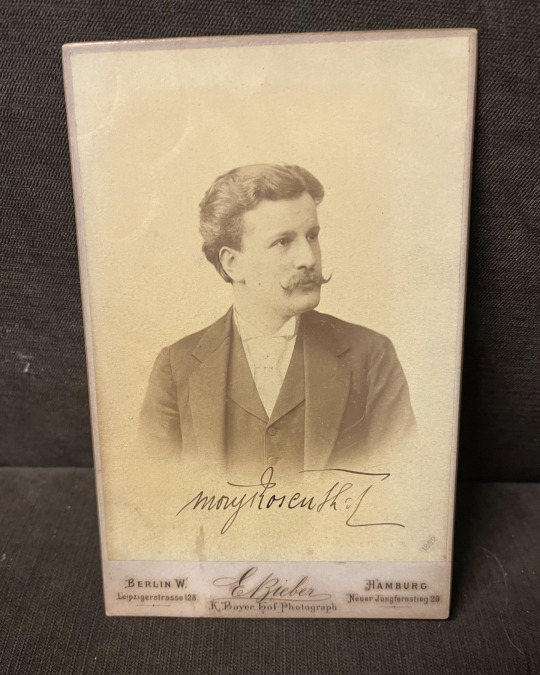

OTD in Music History: Historically important virtuoso pianist Moriz Rosenthal (1862 - 1946) is born in what is now Ukraine.
A student of Karol Mikuli (1821 - 1897, Chopin’s pupil and editor) and Franz Liszt (1811 – 1886), as a mature artist Rosenthal became good friends with many of the greatest composers of the latter half of the 29th Century, including Johann Strauss II (1825 – 1899), Johannes Brahms (1833 – 1897), Camille Saint-Saëns (1835 – 1921), Jules Massenet (1842 – 1912), and Isaac Albéniz (1860 – 1909).
Rosenthal's malicious wit was the stuff of legend. After hearing fellow supervirtuoso Vladimir Horowitz (1903 - 1989) blaze through the octave passages of Pyotr Tchaikovsky's (1840 – 1893) First Piano Concerto (1875) as fast as he could at his legendary Viennese debut, he remarked: "He is certainly an Octavian, but not a Caesar." In a similar vein, after hearing Ignacy Jan Paderewski (1860 - 1941) perform for the first time – Paderewski being one of the biggest matinee idols of the day, and a pianist who was always more beloved by the masses (perhaps in part of his movie-star good looks) than he was respected by his colleagues and the critics – Rosenthal remarked: "Yes, he plays well, I suppose… but he's no Paderewski.”
Rosenthal left behind a recorded legacy of around three hours' worth of music, which was put to disc between 1928 and 1942 for a wide array of labels include Columbia, Edison, Ultraphon, EMI, and RCA Victor. All of it is of remarkable quality, and well worth a listen for any serious student of the piano or any listener interested in stylistic practices that were in evidence during the “Golden Age of the Piano.”
PICTURED: A c. 1893 cabinet photo showing the young Rosenthal, which he signed.
#Moriz Rosenthal#Rosenthal#Polish pianist#pianist#Polish composer#composer#piano#classical composer#pedagogue#teacher#piano concerto#Piano#Concerto#Concert#classical#classical music#music#music history#classical studies#Fortepiano#conductor#orchestra#symphony#concert hall
0 notes